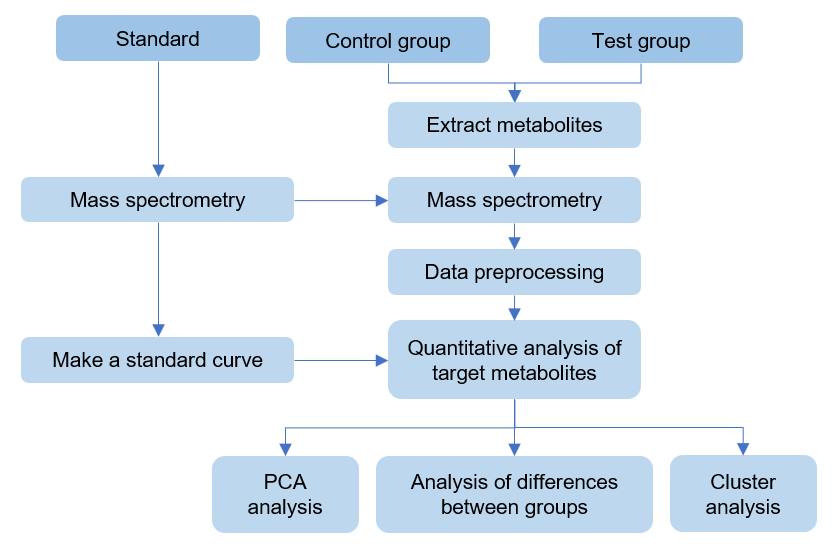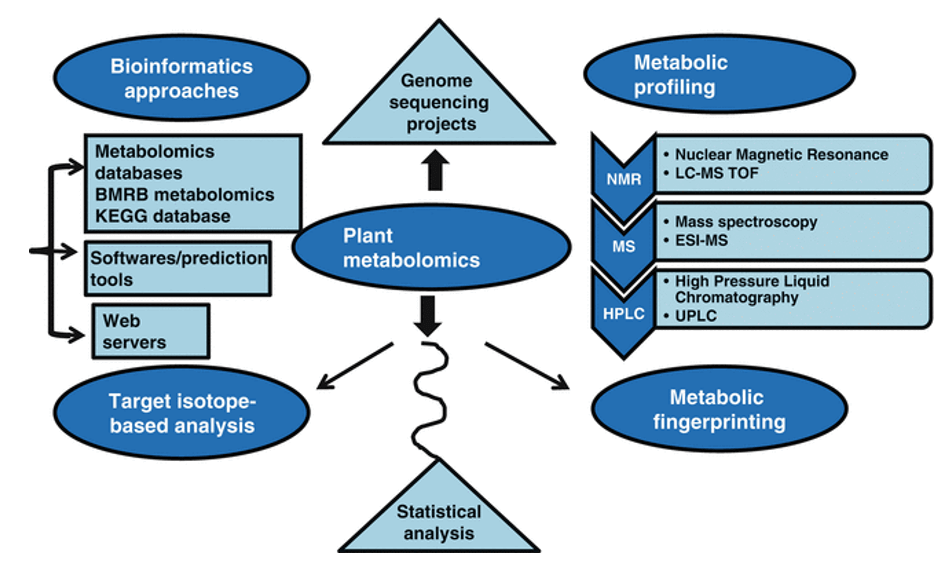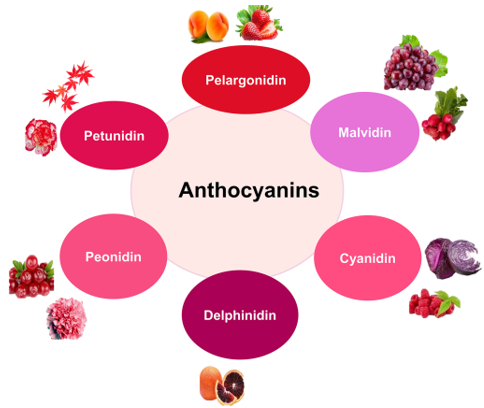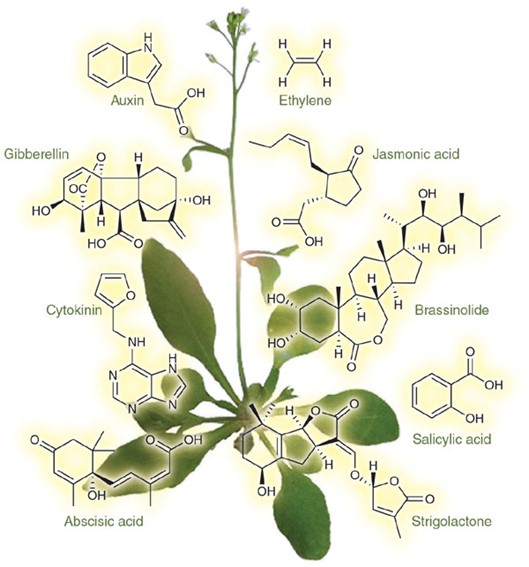Delphinidin Analysis Service
Submit Your InquiryWhat is Delphinidin?
Delphinidin is an anthocyanin, a major pigment of the plant. Delphinidin gives the flowers of Corydalis spp. and Delphinium spp. a blue color. It is sensitive to pH and is a natural pH indicator that changes from red in alkaline solutions to blue in acidic solutions.
Delphinidin is also an antioxidant. It has been found that delphinidin has a photochemical preventive effect by inhibiting UVB-mediated oxidative stress and reducing DNA damage, thus protecting cells from UVB-induced apoptosis. Flavonoids have anti-tumor effects, such as the typical flavonoids leucovorin and quercetin, both of which can effectively inhibit tumor cell proliferation and induce autophagy production. Delphinidin, one of the major monomeric active components of the typical flavonoid anthocyanins, inhibits the proliferation of ovarian clear cell carcinoma and malignant glioma. The identification and detection of changes in the content of delphinidin is essential in the study of the functional mechanism of delphinidin, disease treatment and drug development. Creative Proteomics provides delphinidin identification and content analysis services based on HPLC-MS analysis technology to accelerate your related research.
 The molecular structure of delphinidin
The molecular structure of delphinidin
The Substances We Can Test
| Delphinidin | Delphinidin 3-galactoside | Delphinidin-3-glucoside | Cyanidin | Petunidin |
| Malvidin | Peonidin | Rosinidin | Luteolinidin |
Methods for Delphinidin Extraction:
The extraction of Delphinidin from plant sources requires careful optimization to obtain high yields and high purity. Several extraction methods are used, including solvent extraction, solid-phase extraction, ultrasonic-assisted extraction and supercritical fluid extraction.
Solvent extraction, especially using organic solvents such as methanol, ethanol or acidified water, is one of the most common methods. Plant material is soaked or infiltrated with the solvent, and then the extract is filtered and concentrated. Solid phase extraction techniques involve the use of sorbent materials, such as silica gel or C18 cartridges, to selectively adsorb and elute delphinidin.
Ultrasound-assisted extraction uses the mechanical energy generated by ultrasound to enhance the extraction process. This method is known for its high efficiency, short extraction time and low solvent consumption. Supercritical fluid extraction employs a supercritical fluid, such as carbon dioxide, to extract delphinidin. this technique has the advantages of high selectivity, low environmental impact, and no solvent residues.
Delphinidin Metabolomic Assay Techniques
In order to perform a delphinidin metabolomic study, a number of procedures must be followed, including sample preparation, metabolite extraction, separation, detection, and data analysis. In delphinidin metabolomic research, a number of analytical methods are often used, including liquid chromatography-mass spectrometry (LC-MS) and gas chromatography-mass spectrometry (GC-MS).
- LC-MS combines mass spectrometry's sensitive and precise detection capabilities with liquid chromatography's high separation efficiency. It makes it possible to find and measure the levels of delphinidin metabolites in intricate biological samples. Different ionization techniques, such as electrospray ionization (ESI) and atmospheric pressure chemical ionization (APCI), can form the foundation of LC-MS procedures. Various software programs may be used to process the acquired data for peak alignment, metabolite identification, and statistical analysis.
- For the analysis of volatile and semi-volatile metabolites, GC-MS is frequently utilized. Gas chromatography is used to separate the metabolites, and then mass spectrometry is used to detect and identify them. In order to increase the volatility and stability of delphinidin metabolites, derivatization processes are frequently necessary. High resolution, sensitivity, and repeatability are characteristics of GC-MS that make it ideal for the investigation of certain metabolic pathways involving volatile chemicals.
These methods enable thorough characterization of the metabolites linked to delphinidin metabolism, offering insightful information about its bioavailability, metabolic pathways, and biological consequences. Advanced statistical and bioinformatics methods may be used to further evaluate the data from these experiments in order to pinpoint major metabolite changes, link metabolic changes to physiological responses, and clarify the bioactivity of delphinidin's underlying processes.

Sample Requirements of Delphinidin Assay
Delphinidin can be found in various biological matrices, including:
- Plant Tissues: Common plant parts from which delphinidin is derived include fruits, leaves, flowers, and stems. Depending on the species and stage of growth of the plant, different plant sections may have different amounts of delphinidin.
- Biological Fluids: Blood, urine, plasma, or serum can be utilized to evaluate delphinidin metabolism and bioavailability in investigations using human or animal models.
- Food and Dietary Supplements: Delphinidin is present in food sources, including berries (such as blueberries, blackberries and cranberries), grapes, red cabbage and other fruits and vegetables. As well as dietary supplements containing Delphinidin or Delphinidin-rich extracts were also used in the analysis.
Application of Delphinidin Metabolomics
Identification of Metabolic Pathways: Metabolomic studies elucidate the metabolic fate of delphinidin within different organisms, including humans. By identifying the metabolic pathways involved in delphinidin biotransformation, you can understand how this flavonoid is processed and utilized by the body.
Disease Biomarker Discovery: Metabolomic profiling of delphinidin in biological fluids or tissues can contribute to the discovery of potential biomarkers for various diseases. Altered levels of specific delphinidin metabolites may be indicative of disease progression, treatment response, or metabolic dysregulations.
Pharmacokinetic Studies: Understanding the pharmacokinetics of delphinidin is crucial for the development of therapeutic interventions. Metabolomic analysis helps determine the absorption, distribution, metabolism, and excretion profiles of delphinidin and its metabolites, providing valuable information for drug development and dosage optimization.
Nutritional and Dietary Studies: Metabolomic analysis of delphinidin in food and dietary supplements enables the assessment of its bioavailability and contribution to human nutrition. It aids in evaluating the impact of processing methods, storage conditions, and cooking on delphinidin content and bioactivity.
Biological Effects and Mechanisms: Metabolomics provides insights into the downstream effects and mechanisms of action of delphinidin. By correlating metabolite profiles with biological responses, you can unravel the complex interactions between delphinidin and cellular pathways, shedding light on its therapeutic potential.
Service Process

Project Cycle
About 1-3 weeks
Creative Proteomics can provide a wide range of target metabolomics services, including target metabolic pathways, target metabolite analysis, and more. If you have any questions or other compounds you would like to test, please feel free to contact us.









